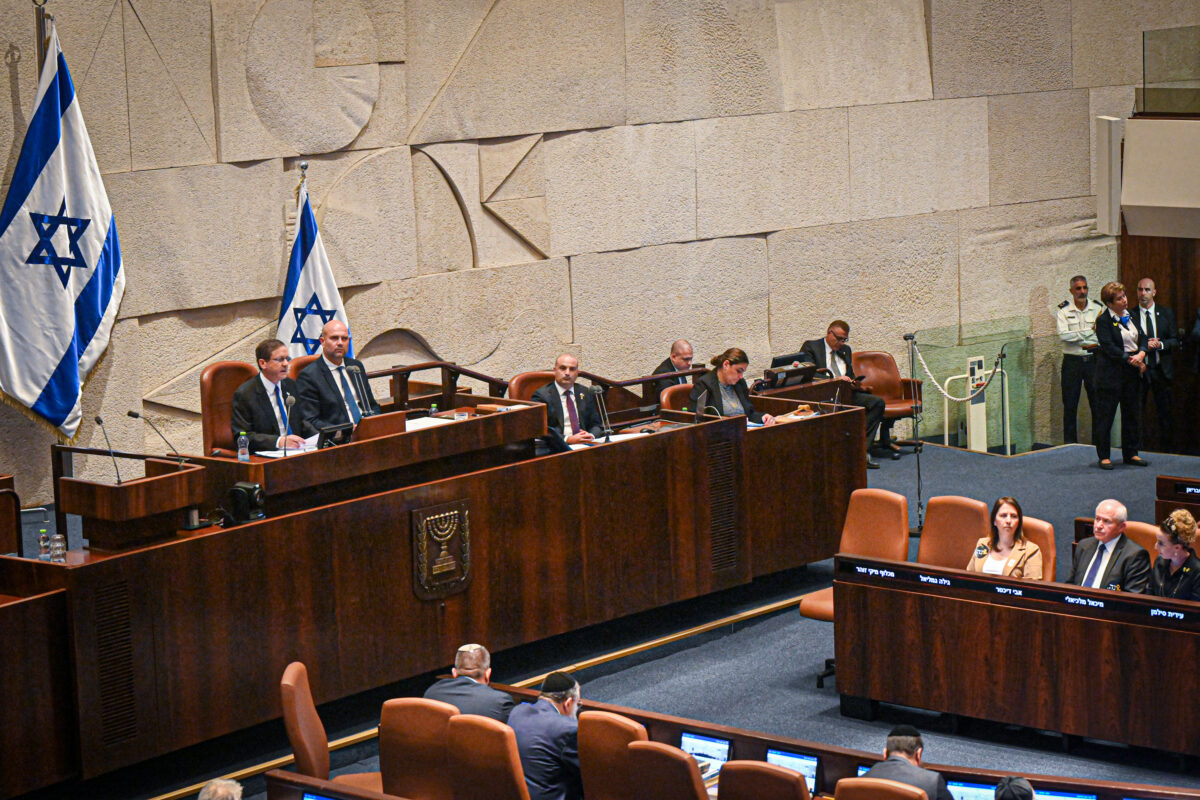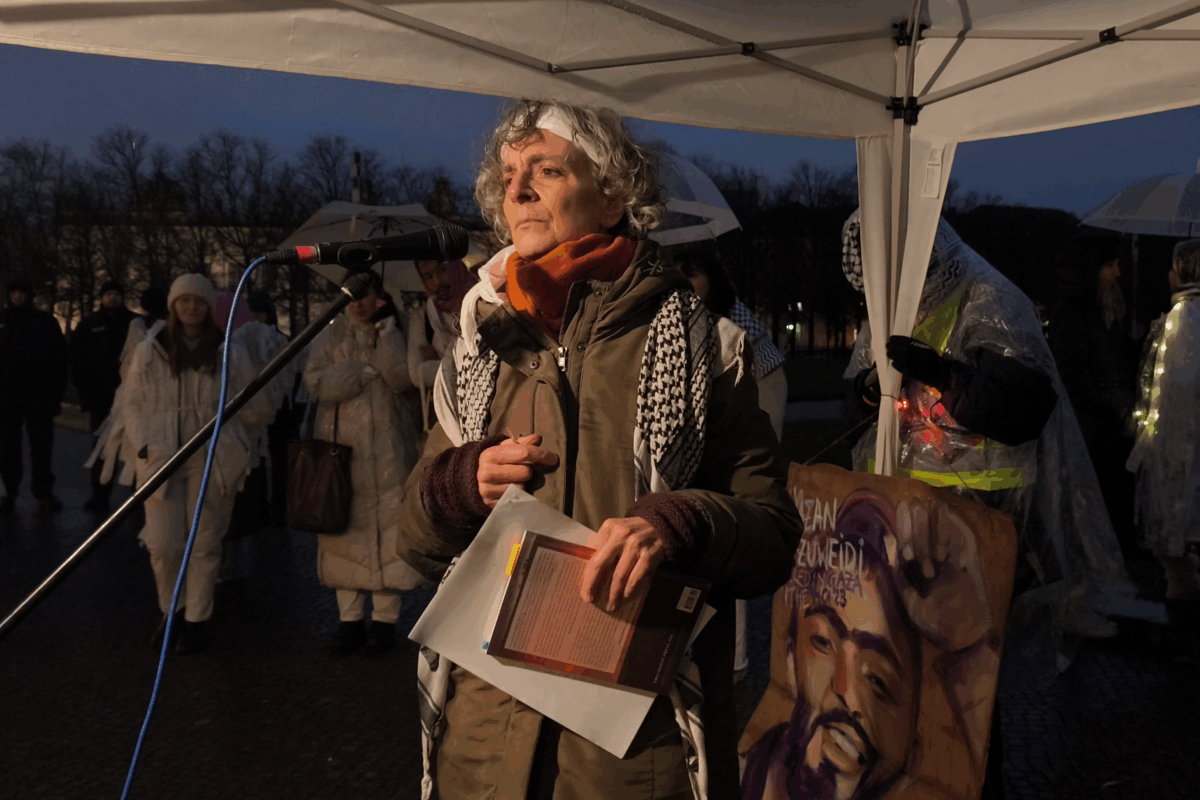Experiencing Larissa Sansour’s Sci-Fi trilogy A Space Exodus (2008), Nation Estate (2012) and In the Future They Ate from the Finest Porcelain (2015) means recognising the historical monopolisation of Science Fiction by Western views of the future. The image of post-western civilisation dystopian environments as a result of hyper-technology warfares and the zenith of colonialism, is just an unfair mirroring of what the world already looks like. Sansour’s work pays tribute to the anti-colonial struggle and recognises its political subject as an active main character of these fictions that have been historically dictated by Hollywood’s imperialist agenda. Translating Palestine resistance concepts into Sci-Fi language unveils her commitment to provide with complete agency the role of this political agent that’s fighting for survival, rebellion, recognition, reparation and justice.
The act of defying fictional western narratives prompts us to explore the utilities of imagination as vehicles for change. This means understanding material realities in contexts of colonisation and using them as literary sources to create a true identification with the oppressed and against the oppressors. The metaphor in A Space Exodus (2008) is a victory of liberation. Jerusalem has been set free in the confinements of the Galaxy and the Moon has been claimed as Palestinian land. This is a direct reflection of how hegemonic historicist visions can, and must, be rethought. There’s also an imperative need to produce fictions in which the dystopian visions of classical cyberpunk can be subverted into constructive and optimistic ecosystems. This means responding to the demands of imagining future landscapes in which collective liberation has been achieved. Larissa Sansour is an artist who enables this, not by explicitly designing a socialist one-state secular utopia where all oppressions have been dismantled, but by situating the true agents of Palestinian liberation as the nexus of resistance stories.
The liminal language used in Nation Estate (2012) poses the question of borders, freedom of movement, the coloniser’s gaze and the consequences of hyper-militarised technologies that mirror the history of Palestinian land. The 3D rendered versions of archeological and historical sites echo the dispossession and decontextualization of Palestinian heritage the same way in which early colonial museographic strategies plundered material vestiges of indigenous civilizations from all over the world in order to exalt the imperialist powers of the West. However, retaking on hopeful visions of the future, the film reveals an olive tree being watered, that spreads and grows once it’s taken root in the hearts of the people, just like the baby being grown in the main character’s womb, giving a glimpse of this bio-engineered ecological system that has been established within the colossal concrete locked-up city.
The iconography from In the Future They Ate from the Finest Porcelain (2015) is perhaps the most loyal to the post-apocalyptic narrative, taking on elements from solarpunk, cyberpunk, steampunk and other literary streams within the fantasy movement. The pop culture references that repeatedly appear become a tool for the audience to relate to the protagonist and facilitate an empathy exercise with her. We’ve seen this in many mainstream works like The Hunger Games, Avatar, Sucker Punch, Ghost In The Shell, Nausicaa of the Valley of the Wind, Princess Mononoke, Altered Carbon and so many others where the narrative collides, either because of an imperialist military power that wants to steal and subordinate the native population of a land, or because of a governmental elite is heavily oppressing its own population through exploitation, surveillance and torture. The stories are all there, and we never question on which side we are because the equation is too simple. Israel, as an illegitimate military terrorist and imperialist power that has tried, through a heavily US-funded propaganda machinery, to convince the international community that this is a complex issue, can be proved wrong, and the stories from these films and productions have the literary potential to do so.
Another central element in the plot is time. The piece is a dialogue between past, present and future through the lens of loss and emancipation. This is relevant to the current context because the actual genocide of the Gazan people is the proof of how “a nineteeth-century colonialist project” has been “extended into the twenty-first century” (Ilan Pappé, On Palestine) and the imagery of the finest porcelain connects the questions of history, identity and weapons of resistance that will redfine Palestinian identity in the name of liberation.
To conclude, Larissa Sansour’s Sci-Fi trilogy is a response to a necessity that has been demanded by contemporary fiction writing and screening, reviewing old outdated narratives and transforming them into a potential anti-colonial Sci-Fi genre that constitutes the afrofuturist and solarpunk movements as real alternatives to future imaginations.The challenge of science fiction is being faced with the potentiality of creating a new world and as Ursula K. Le Guin famously stated “We live in capitalism, its power seems inescapable. So did the divine right of kings. Any human power can be resisted and changed by human beings. Resistance and change often begin in art.”




